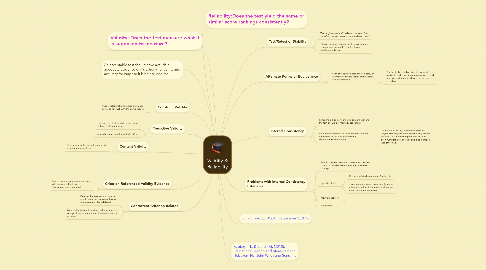Validity & Reliability
by erica brooks


1. Construct Validity
1.1. Valid if relationship to other informatin corresponds well with the same theory.
2. Content Validity
2.1. Determines wether or not test meets instructional objectives.
3. Criterion Referenced Validity Evidence
3.1. Scores from a test are are correlated with an external criterion. (Concurrent and predictive).
4. Concurrent Criterion Related
4.1. Deals with measures that can be administered at the same time as the measure to be validated.
4.2. New test and established test administered to group of despondants, and then a correlation is found.
5. Predictive Validity
5.1. How well the test predicts some future behavior of examinees
5.2. Especially useful in aptitude tests (SATs).
6. Validity: Does the test measure what it is supposed to measure?
7. Reliability:Does the test yield the same or similar score rankings consistently?
8. An acceptable test should have available adequate evidence of it's validity, reliability and accuracy for purpose it is being used for.
9. Problems with Internal Consistency Estimates
9.1. Should only be used if all material on the test consist of similar items measuring a similar concept.
9.2. Speeded tests:
9.2.1. Porduce inflated estimates of reliability
9.2.2. Testers are measured according to items attempted rather than mastery of subject areas or written expression.
9.3. Main objective 3
9.3.1. Task
9.3.2. Prerequisites
9.4. New node
10. Test/Retest or Stability
10.1. Test is given twice. Correlation between first set of scores and second set are determined.
10.2. Intervel between testing must be considered. Longer intervals could result in lower coefficient reliability.
11. Alternate Forms or Equivelance
11.1. With two equivelant forms of a test, an estimate of the reliability of the scores can be obtained.
11.1.1. For this to be reliable, two forms must be available and conditions must available and testing conditions need to be as similar as possible.
12. Internal Consistency
12.1. Items should be correlated to one another and the test should be internally consistent.
12.2. Split halves method: splitting the test into two equivelant halves and determining correlation between them.
12.2.1. Odd even reliability: ideal when items of varying difficulty are not spread evenly around the test. This method implements dividing even numbers into one half and odd numbers into other half.
